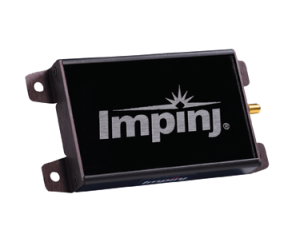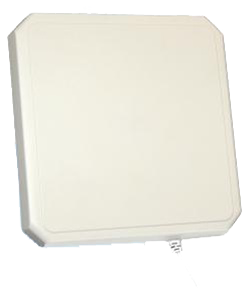Understanding Near-Field and Far-Field Antennas
Introduction
The electromagnetic field that surrounds an RFID antenna can be broken up into two segments – near-field and far-field. Typically, near-field is defined as the field around the antenna up to one wavelength (λ) away (approximately up to 35 centimeters). The two segments of the RF field, near-field and far-field, have different energies so they typically require a corresponding antenna type to get the best read range. (The near-field is primarily magnetic in nature, while the far-field has both electric and magnetic components.)
The communications between an RFID tag and an RFID reader (via the antenna) occurs using a process known as electromagnetic coupling. There are two types of coupling – inductive and capacitive.
Inductive
A near-field antenna uses inductive coupling which means that it uses a magnetic field to energize the RFID tag. A magnetic field is created in the near-field region that allows the RFID reader’s antenna to energize the tag. The tag then responds by creating a disturbance in the magnetic field that the reader picks up and decodes.
Capacitative
A far-field antenna uses capacitive coupling (or propagation coupling) to energize the RFID tag. Capacitive coupling occurs when the RFID reader’s antenna propagates RF energy outward and that energy is used to energize the tag. The tag then sends back a portion of that RF energy to the reader’s antenna as a response which is known as backscatter.

Impinj Mini-Guardrail ILT (LP) Indoor RFID Antenna (Global)
With a low profile and a small form factor, a near-field antenna is perfect for short read range applications. Unlike far-field antennas which send out a propagating electromagnetic field, near-field antennas generate a local magnetic field. Additionally, near-field antennas are typically less rugged than far-field antennas and usually intended for indoor environments. As near-field antennas are less commonly used, there are limited options available for deployment.

RFMAX S9028PCR/S8658PCR (RHCP) Indoor RFID Antenna (FCC/ETSI)
Far-field antennas come in a wide variety of shapes and sizes and generally can read tags between a few centimeters, up to more than 30 feet away in ideal conditions. Plenty of options are available when selecting a far-field antenna such as linear or circular polarization, varying gain, and options for indoor or outdoor use. Due to the increased read zone when using far-field antennas, stray tag reads (i.e. reading unintended RFID tags) tend to be a common issue.
Conclusion
If you have any questions about this topic, please contact us or leave a comment below!
To learn more about all things RFID, check out our website or our YouTube channel.
To learn more about the basics of RFID, check out the links below!

